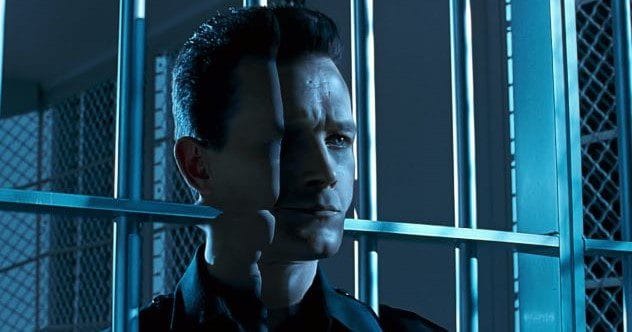Time travel in movies continues to fascinate audiences. While scientists haven’t made it a reality, filmmakers have brought the concept to life through souped-up DeLoreans, futuristic devices, and unexpected time loops. Here are ten amazing behind-the-scenes facts about time travel movies.
1. Hot Tub Time Machine Began with the Title
Most movies start with a story idea. However, Hot Tub Time Machine (2010) began with its catchy title. Writer Josh Heald revealed that the idea sparked during a conversation about ’80s comedies. Producer Matt Moore jokingly suggested a remake of the ski comedy Hot Dog… The Movie (1983). Heald misheard “Hot Tub” and began writing a new ski comedy.
Heald realized that setting it in the ’80s would be too cliché, but a present-day setting wouldn’t capture the right comedic tone. He recalled thinking, “If only there was a way to set it in both times… Some sort of time machine. A Hot Tub Time Machine.” He then crafted a story around the title, emphasizing the absurdity of the concept.[1]
2. Happy Death Day’s Creepy Mask Almost Featured a Pig
The unsettling babyface mask in Happy Death Day (2017), worn by Tree’s (Jessica Rothe) assailant, was designed by Tony Gardner. He also created the Ghostface mask for Scream (1996). Director Christopher Landon initially conceived the idea for the mask.
Landon explained, “I was expecting my first son. I don’t know if I just had babies on the brain or if I was subconsciously scared to become a father, but that baby image was floating around in my head. Tony made us a pig mask, too, but when I wore the baby mask in the office, I scared a co-worker, and we thought… yeah, this is it. This is the one.” Legal issues arose when Jonathan Bertuccelli sued Universal and Blumhouse, claiming the mask resembled his design for the New Orleans Pelicans mascot.[2]
3. 12 Monkeys Set Design Resulted in a Lawsuit
In 12 Monkeys (1995), Bruce Willis’s James Cole is interrogated in a unique room. The film’s visual style drew inspiration from Josef Sudek’s photography and Lebbeus Woods’ experimental architecture. Production designer Jeffrey Beecroft recreated Woods’ drawing, “Neomechanical Tower (Upper) Chamber.”
Woods sued Universal, Beecroft, and director Terry Gilliam when he discovered his art was used without permission. The judge initially sided with Woods, potentially halting the film’s distribution. However, Woods allowed the movie to continue in exchange for a six-figure settlement. [3]
4. Time Travel in Avengers: Endgame Solved a Writing Dilemma
Avengers: Infinity War (2018) presented writers Christopher Markus and Stephen McFeely with a challenge: how to reverse the snap that wiped out half the population? Markus explained they were struggling to find a way out of the corner they had written themselves into.
They eventually incorporated time travel. Despite initially dismissing it as a ridiculous idea, they realized that the Ant-Man franchise contained the seeds of a time machine, based on quantum physics. Bruce Banner’s explanation of time travel in the movie was based on input from quantum physicists consulted by the writers.[4]
5. Edge of Tomorrow Exosuits Required Actors to Hang from Chains
In Edge of Tomorrow (2014), actors wore heavy armored exoskeletons called ExoSuits. Director Doug Liman aimed for realism, which meant the suits were incredibly heavy.
The suits weighed around 85 pounds (38.5 kg), with some reaching up to 176 pounds (79.8 kg) with extra equipment. During breaks, actors were suspended from chain rigs to alleviate the weight, described by Emily Blunt as resembling a kid’s swing set.[5]
6. Terminator 2’s Special Effects Budget Was Massive
The Terminator (1984) had a budget of $6.4 million. The special effects budget for Terminator 2 (1991) exceeded twice that amount, reaching $15-$17 million. The movie’s total cost was $94–102 million, making it the most expensive film at the time. Most of the effects budget went to the liquid metal CGI of the T-1000 (Robert Patrick).
Writer and director James Cameron had wanted the T-1000 in the original but lacked the technology and budget. He was confident it was now possible after using ILM for the water alien in The Abyss (1989). Although T2 is renowned for its CGI, many practical effects were also used, like the frozen T-1000 model created by Stan Winston.[6]
7. Sean Connery’s Accidental Role in Time Bandits
Terry Gilliam and Michael Palin wrote Time Bandits (1981) intending Agamemnon to be played by a surprise famous actor. They wanted Sean Connery but thought he was unattainable. The script jokingly stated, “He reveals himself to be none other than Sean Connery or an actor of equal or cheaper stature.” Connery, a Python fan, accepted the role.
Connery was invaluable during filming. After not directing for a few years, Gilliam struggled on day one. Connery intervened and advised on shots, saving Gilliam’s “ass.” Connery also made the ending special by playing the fireman, working it around a meeting with his accountant in England.[7]
8. Crispin Glover’s Back to the Future Part II Replacement Led to Legal Action
Crispin Glover declined to reprise George McFly in Back to the Future Part II (1989) due to pay disparity and his disagreement with the first film’s ending, which equated money with happiness.
Robert Zemeckis and Bob Gale replaced Glover by using molds of his face from the first movie to create prosthetics for replacement actor Jeffrey Weissman. This led to Glover filing a lawsuit against Universal for using his likeness without permission. Universal settled, resulting in regulations to prevent filmmakers from mimicking actors.[8]
9. Groundhog Day’s Original Twist Ending
Danny Rubin’s original script for Groundhog Day (1993) began mid-story and ended with a twist. The audience would see Phil (Bill Murray) knowing everything that would happen, then a voiceover would reveal he was in a time loop. Director Harold Ramis and development executive Whitney White felt viewers needed to see Phil’s initial reaction to the time warp.
The filmed ending shows Phil waking up next to Rita (Andie MacDowell), indicating the loop was broken. Rubin’s original script had Rita leaving immediately and revealing that she had been reliving February 3 repeatedly, switching the voiceover to her perspective.[9]
10. Bill and Ted’s Excellent Adventure Character Confusion
It’s hard to imagine anyone other than Alex Winter as Bill S. Preston, Esquire, and Keanu Reeves as “Ted” Theodore Logan in Bill and Ted’s Excellent Adventure (1989). However, the actors initially believed they were cast in each other’s roles. Reeves revealed they both thought they were playing the other character until wardrobe fittings.
Winter and Reeves’ chemistry in the waiting room led to them auditioning together for both parts, causing the confusion. [10]
These behind-the-scenes facts reveal the creative processes, challenges, and serendipitous moments involved in making time travel movies. From unexpected casting choices to legal battles and clever solutions to plot problems, these stories offer a glimpse into the magic behind these films.
Which of these facts surprised you the most? Let us know in the comments below!










